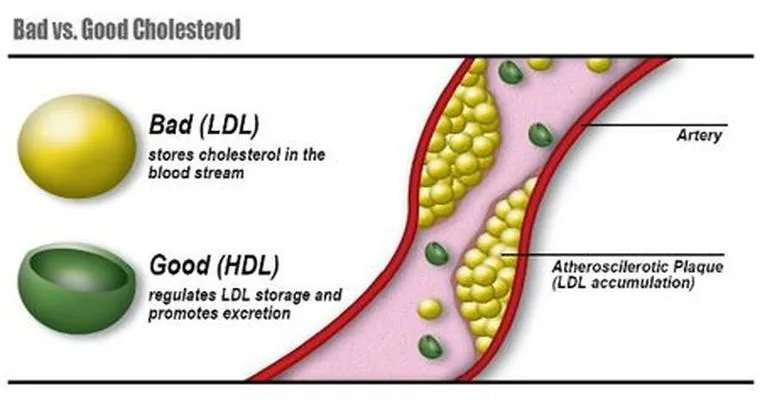Cholesterol is often a misunderstood term, frequently associated with heart disease and health risks. However, not all cholesterol is created equal. Understanding the difference between "good cholesterol" and "bad cholesterol" is crucial for maintaining a healthy lifestyle. This article will clarify these differences, their functions in the body, and how you can manage your cholesterol levels effectively.
Understanding Cholesterol
Cholesterol is a type of fat that is essential for various bodily functions, including hormone production, vitamin D synthesis, and the formation of cell membranes. It is carried in the bloodstream by lipoproteins, which are classified into two main types: "low-density lipoprotein (LDL)" and "high-density lipoprotein (HDL)".
What is Bad Cholesterol?
Low-density lipoprotein, often referred to as "bad cholesterol", can lead to plaque buildup in the arteries. This buildup narrows the arteries and can restrict blood flow, increasing the risk of heart disease, heart attacks, and strokes. High levels of LDL cholesterol are often associated with poor dietary choices, lack of exercise, and other lifestyle factors.
What is Good Cholesterol?
On the other hand, high-density lipoprotein is known as "good cholesterol". HDL cholesterol helps remove LDL cholesterol from the bloodstream and transports it to the liver, where it can be processed and eliminated from the body. Higher levels of HDL cholesterol are associated with a lower risk of heart disease. Factors such as regular physical activity, a healthy diet, and maintaining a healthy weight can help increase HDL cholesterol levels.
How to Manage Cholesterol Levels
Managing your cholesterol levels is vital for heart health. Here are some effective strategies:
1. "Eat a Heart-Healthy Diet": Focus on consuming fruits, vegetables, whole grains, and healthy fats. Foods rich in omega-3 fatty acids, such as salmon and walnuts, can help increase HDL levels.
2. "Exercise Regularly": Engaging in physical activity can raise HDL cholesterol while lowering LDL cholesterol. Aim for at least 150 minutes of moderate aerobic exercise each week.
3. "Maintain a Healthy Weight": Losing excess weight can help lower LDL cholesterol and raise HDL cholesterol.
4. "Avoid Tobacco Smoke": Smoking can decrease HDL cholesterol levels. Quitting smoking can improve heart health and cholesterol levels.
5. "Limit Alcohol Consumption": Moderate alcohol intake may raise HDL levels, but excessive drinking can lead to serious health problems.
Conclusion
In summary, understanding the difference between "good cholesterol" and "bad cholesterol" is vital for your overall health. By focusing on lifestyle changes such as a healthy diet, regular exercise, and avoiding tobacco, you can effectively manage your cholesterol levels. Remember, a balanced approach to maintaining cholesterol levels can lead to a healthier heart and a better quality of life. Always consult with a healthcare professional for personalized advice and cholesterol management strategies.





